Chas Leichner
MobileNetV4 -- Universal Models for the Mobile Ecosystem
Apr 16, 2024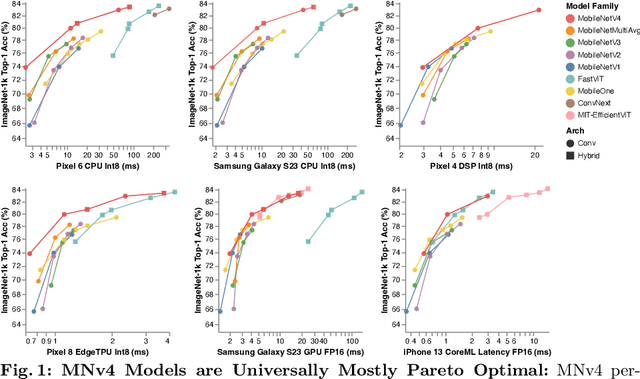


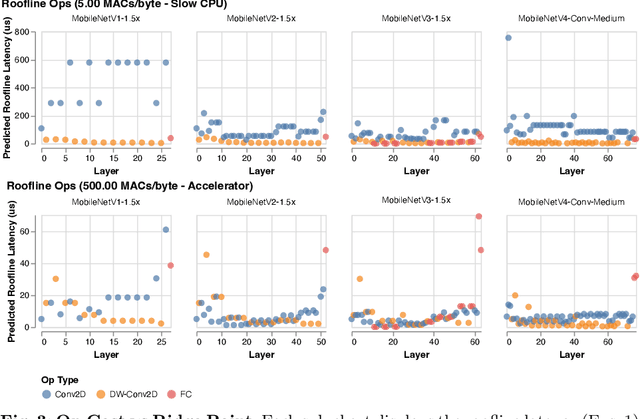
Abstract:We present the latest generation of MobileNets, known as MobileNetV4 (MNv4), featuring universally efficient architecture designs for mobile devices. At its core, we introduce the Universal Inverted Bottleneck (UIB) search block, a unified and flexible structure that merges Inverted Bottleneck (IB), ConvNext, Feed Forward Network (FFN), and a novel Extra Depthwise (ExtraDW) variant. Alongside UIB, we present Mobile MQA, an attention block tailored for mobile accelerators, delivering a significant 39% speedup. An optimized neural architecture search (NAS) recipe is also introduced which improves MNv4 search effectiveness. The integration of UIB, Mobile MQA and the refined NAS recipe results in a new suite of MNv4 models that are mostly Pareto optimal across mobile CPUs, DSPs, GPUs, as well as specialized accelerators like Apple Neural Engine and Google Pixel EdgeTPU - a characteristic not found in any other models tested. Finally, to further boost accuracy, we introduce a novel distillation technique. Enhanced by this technique, our MNv4-Hybrid-Large model delivers 87% ImageNet-1K accuracy, with a Pixel 8 EdgeTPU runtime of just 3.8ms.
PikeLPN: Mitigating Overlooked Inefficiencies of Low-Precision Neural Networks
Mar 29, 2024Abstract:Low-precision quantization is recognized for its efficacy in neural network optimization. Our analysis reveals that non-quantized elementwise operations which are prevalent in layers such as parameterized activation functions, batch normalization, and quantization scaling dominate the inference cost of low-precision models. These non-quantized elementwise operations are commonly overlooked in SOTA efficiency metrics such as Arithmetic Computation Effort (ACE). In this paper, we propose ACEv2 - an extended version of ACE which offers a better alignment with the inference cost of quantized models and their energy consumption on ML hardware. Moreover, we introduce PikeLPN, a model that addresses these efficiency issues by applying quantization to both elementwise operations and multiply-accumulate operations. In particular, we present a novel quantization technique for batch normalization layers named QuantNorm which allows for quantizing the batch normalization parameters without compromising the model performance. Additionally, we propose applying Double Quantization where the quantization scaling parameters are quantized. Furthermore, we recognize and resolve the issue of distribution mismatch in Separable Convolution layers by introducing Distribution-Heterogeneous Quantization which enables quantizing them to low-precision. PikeLPN achieves Pareto-optimality in efficiency-accuracy trade-off with up to 3X efficiency improvement compared to SOTA low-precision models.
Data-Free Neural Architecture Search via Recursive Label Calibration
Dec 03, 2021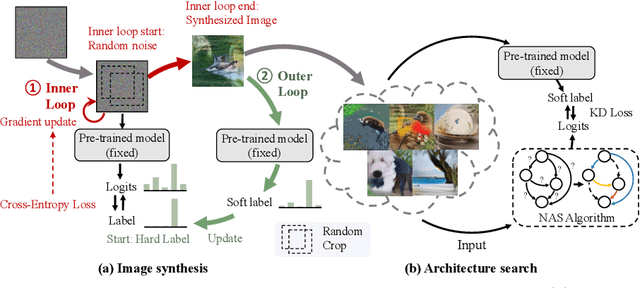
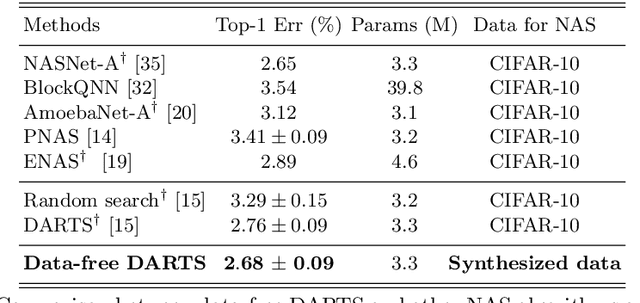
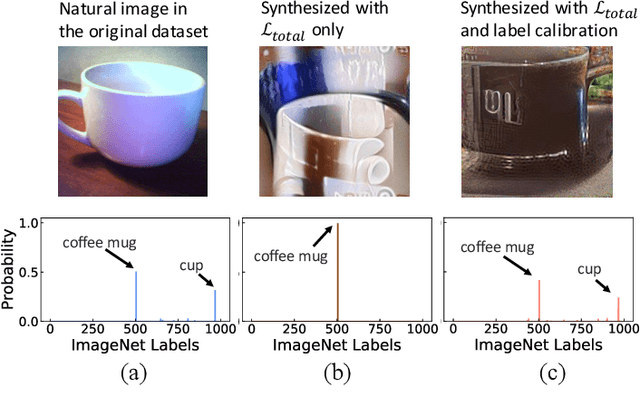

Abstract:This paper aims to explore the feasibility of neural architecture search (NAS) given only a pre-trained model without using any original training data. This is an important circumstance for privacy protection, bias avoidance, etc., in real-world scenarios. To achieve this, we start by synthesizing usable data through recovering the knowledge from a pre-trained deep neural network. Then we use the synthesized data and their predicted soft-labels to guide neural architecture search. We identify that the NAS task requires the synthesized data (we target at image domain here) with enough semantics, diversity, and a minimal domain gap from the natural images. For semantics, we propose recursive label calibration to produce more informative outputs. For diversity, we propose a regional update strategy to generate more diverse and semantically-enriched synthetic data. For minimal domain gap, we use input and feature-level regularization to mimic the original data distribution in latent space. We instantiate our proposed framework with three popular NAS algorithms: DARTS, ProxylessNAS and SPOS. Surprisingly, our results demonstrate that the architectures discovered by searching with our synthetic data achieve accuracy that is comparable to, or even higher than, architectures discovered by searching from the original ones, for the first time, deriving the conclusion that NAS can be done effectively with no need of access to the original or called natural data if the synthesis method is well designed. Our code will be publicly available.
Pareto-Optimal Quantized ResNet Is Mostly 4-bit
May 07, 2021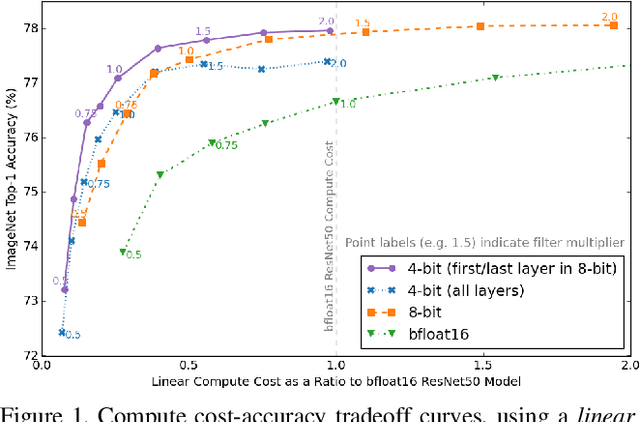


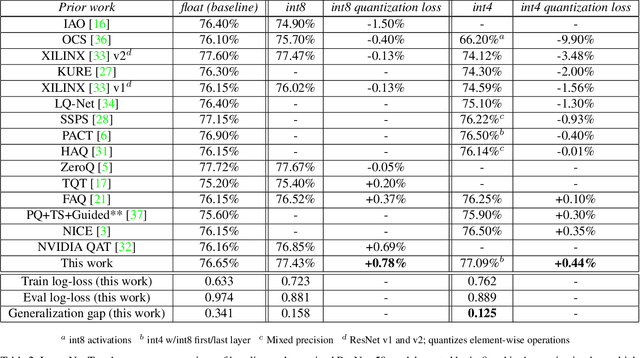
Abstract:Quantization has become a popular technique to compress neural networks and reduce compute cost, but most prior work focuses on studying quantization without changing the network size. Many real-world applications of neural networks have compute cost and memory budgets, which can be traded off with model quality by changing the number of parameters. In this work, we use ResNet as a case study to systematically investigate the effects of quantization on inference compute cost-quality tradeoff curves. Our results suggest that for each bfloat16 ResNet model, there are quantized models with lower cost and higher accuracy; in other words, the bfloat16 compute cost-quality tradeoff curve is Pareto-dominated by the 4-bit and 8-bit curves, with models primarily quantized to 4-bit yielding the best Pareto curve. Furthermore, we achieve state-of-the-art results on ImageNet for 4-bit ResNet-50 with quantization-aware training, obtaining a top-1 eval accuracy of 77.09%. We demonstrate the regularizing effect of quantization by measuring the generalization gap. The quantization method we used is optimized for practicality: It requires little tuning and is designed with hardware capabilities in mind. Our work motivates further research into optimal numeric formats for quantization, as well as the development of machine learning accelerators supporting these formats. As part of this work, we contribute a quantization library written in JAX, which is open-sourced at https://github.com/google-research/google-research/tree/master/aqt.
 Add to Chrome
Add to Chrome Add to Firefox
Add to Firefox Add to Edge
Add to Edge